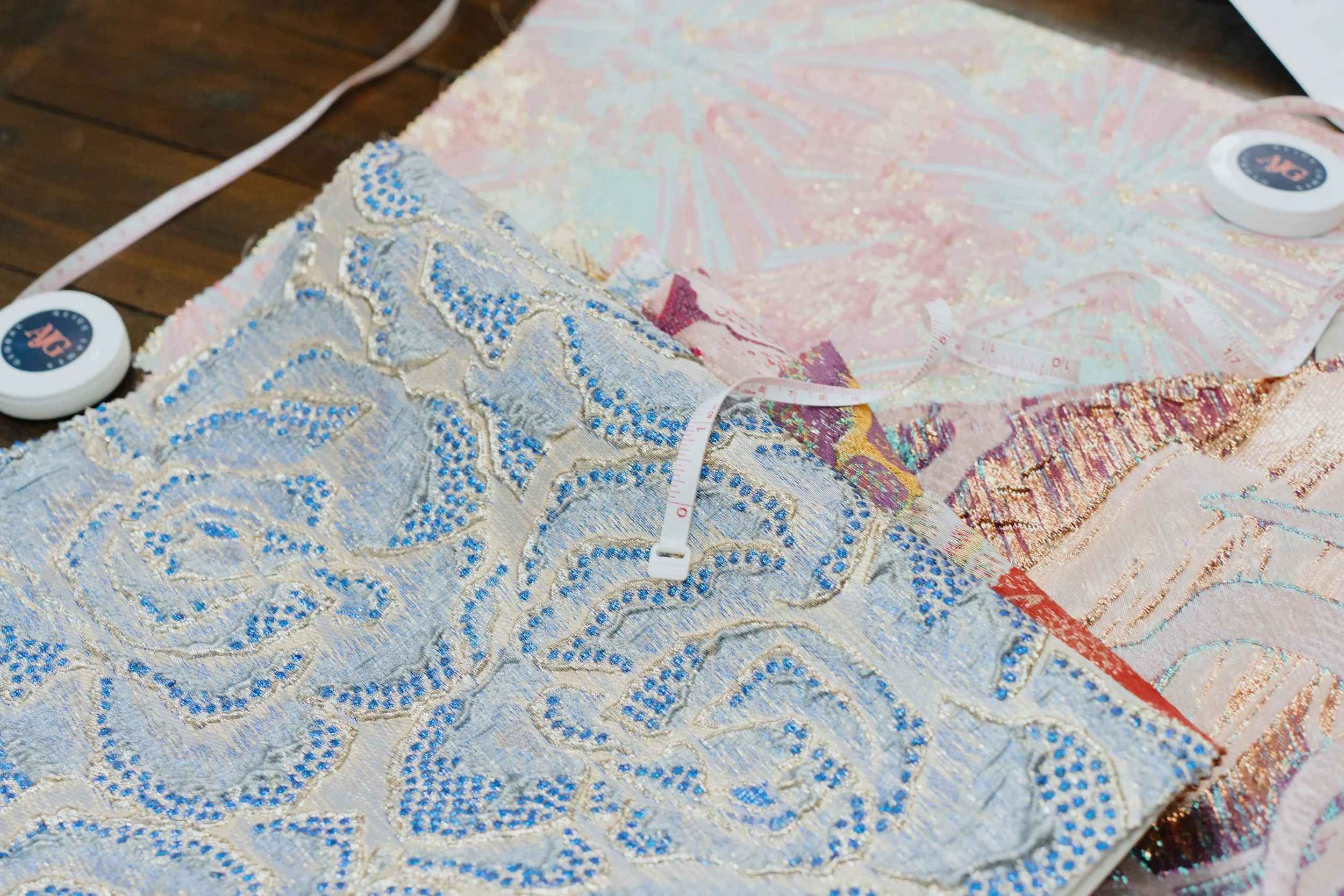Can You Produce Sustainably On A Budget? Yes, And Here’s How!
Can You Produce Sustainably on a Budget? Yes, Here's How
Launching a sustainable fashion line can feel daunting, especially when you're working with a limited budget. The good news? Ethical production doesn’t have to break the bank. At AJG Fashion Consulting, we guide brands through strategic sourcing and smart production practices that balance sustainability, ethics, and affordability. Here's how you can do it too.
Understanding Ethical Fashion
Ethical fashion focuses on reducing negative impacts on people and the planet throughout the production process. It emphasizes fair wages, safe working conditions, reduced environmental impact, and transparency. Ethical fashion isn’t just a trend it’s a necessary shift for brands that value longevity, reputation, and customer loyalty. Before diving into sourcing, take a moment to define what sustainability means for you. Is it about using low-impact materials? Ethical labor? Minimizing waste? All of the above?
Sustainability isn’t one-size-fits-all. If you're a small brand, trying to hit every certification right out the gate may not be feasible. But that doesn’t mean you can’t make meaningful progress.
Start by identifying which pillars of sustainability you want to prioritize:
Social responsibility (fair labor, ethical wages, safe working conditions)
Environmental impact (low-waste production, biodegradable or recycled materials)
Localized production (reduced carbon footprint, domestic or nearshore manufacturing)
Need help determining where to start? → Read: How to Find Ethical Manufacturers
Define What “Sustainability” Means for Your Brand
Not every brand will (or should) adopt the same approach. Sustainability can mean reducing waste, choosing natural fibers, supporting ethical labor, or localizing your supply chain. Before you begin sourcing, decide which aspects matter most for your mission, customers, and business model.
Tactical Tips for Budget-Friendly Sustainable Production
Use Available Fabrics and Deadstock
One of the most immediate ways to lower your environmental impact and cost is by working with available materials. That includes:
Deadstock fabrics: Surplus from mills or brands that would otherwise go to waste
In-stock options: Pre-existing rolls ready to ship (vs. custom-dyed or woven)
Available fabrics often come at a lower price and faster lead time, reducing both cost and development delays.
From the Materials Development chapter in our Fashion Entrepreneur’s Toolkit, we recommend starting your sourcing plan by identifying which materials are truly “need to have” vs. “nice to have.” Choosing fabrics that are in-stock can reduce your sampling timeline by weeks.
Choose Ethical Suppliers Within Budget
Being on a budget doesn’t mean cutting corners on values. It means being strategic about vendor selection:
Start local when possible: Domestic vendors may offer lower MOQs, easier communication, and reduced shipping emissions.
Vet international partners: If you’re sourcing overseas, request social compliance certifications (e.g. WRAP, SA8000, SMETA) and ask about their labor practices and wage standards.
Ask the right questions: What are your working hours? Are workers paid hourly or per piece? Do you have third-party audits?
Check out our guide on Tips for Finding a Trustworthy Manufacturer for more guidance on vetting vendors ethically.
Focus on Quality Over Quantity
Overproduction is one of fashion’s biggest sustainability issues. Rather than chasing low-cost, high-volume production, consider these strategies:
Tighten your assortment: Focus on fewer styles done really well.
Use pre-orders: Validate demand before committing to bulk production.
Build in scalability: Choose factories that can grow with you rather than overproducing early.
→ Learn how MOQs can affect your sourcing decisions in our Sourcing Strategy Blog.
Make Your Sustainability Visible
Your efforts don’t count if customers don’t know. Share your sourcing process, values, and certifications transparently. Educated consumers are more likely to support your brand and understand your price point.
Some brands go so far as to build sustainability into their packaging and labeling strategy sharing factory partners, carbon footprints, and material origins on hangtags or product pages.
Final Takeaways
Yes, sustainable fashion can be done on a budget with the right partners and a smart sourcing strategy:
Define your sustainability goals clearly
Use deadstock or available fabrics where possible
Choose vendors with ethical certifications
Focus on quality and transparency
How AJG Faces Fashion’s Environmental and Social Impact
At AJG Fashion Consulting, we guide brands through the complex landscape of ethical fashion. Our approach includes:
Sourcing Strategy: Identifying reliable ethical suppliers and sustainable fabrics that align with your budget and brand values.
Efficient Production Processes: Reducing waste and maximizing resources through meticulous planning and smart design.
Education and Transparency: Providing clients with the tools and knowledge to make informed choices about their production and communicate their sustainability story effectively.
Realistic Steps to Sustainable Production
Evaluate Your Supply Chain: Begin by analyzing your current practices and pinpointing areas for improvement.
Start Small: You don’t have to overhaul your entire process overnight. Small, incremental changes lead to significant long-term impact.
Seek Professional Guidance: Expert insights can streamline your journey to sustainability, helping you navigate complex ethical considerations while maintaining cost-efficiency.
Ready to Produce Sustainably?
You don’t have to compromise your values or your budget. AJG Fashion Consulting offers tailored ethical sourcing support designed to help emerging brands achieve their sustainability goals affordably.
Schedule a consultation to discover how we can help you produce ethically and sustainably—without breaking the bank.


